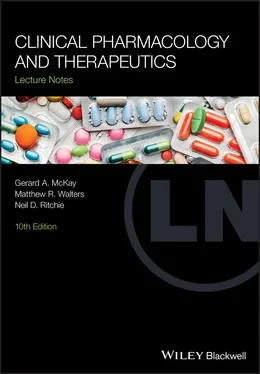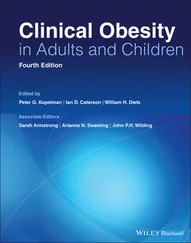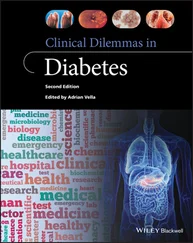Table 1.1 P450 inhibitors involved in drug interactions.
| Major human P450s |
Typical inhibitors |
| CYP1A2 |
Furafylline, fluvoxamine, ciprofloxacin |
| CYP2C9 |
Fluconazole, ketoconazole, sulfaphenazole |
| CYP2C19 |
Omeprazole, ketoconazole, cimetidine |
| CYP2D6 |
Quinidine, fluoxetine, ritonavir |
| CYP2E1 |
Disulfiram |
| CYP3A4 |
Ketoconazole, itraconazole, ritonavir, clarithromycin, diltiazem |
As with induction, P450 inhibition is not limited to drug administration. Grapefruit juice is an inhibitor of CYP3A4 activity and produces clinically significant interactions with a number of drugs, including midazolam, simvastatin and terfenadine. This type of information, together with some knowledge of the enzymes involved in a particular drug's clearance, makes it much easier to understand and predict drug interactions.
Clearly, pronounced enzyme inhibition, which may result in plasma concentrations of the inhibited drug being many times higher than intended, can be a major safety issue. For example, co‐administration of ketoconazole or ritonavir with the hypnotic drug midazolam increases the midazolam plasma exposure (AUC – area under the curve) by 15–20 times, a situation which should be avoided.
Genetic factors in metabolism
The rate at which healthy people metabolise drugs is variable. Although part of this variability is a consequence of environmental factors, including the influence of inducers and inhibitors, the main factor contributing to interindividual variability in metabolism is the underlying genetic basis of the drug‐metabolising enzymes. Although there is probably a genetic component in the control of most P450 enzymes, some enzymes (e.g. CYP2C19 and CYP2D6) actually show genetic polymorphism. This results in distinct subpopulations of poor and extensive metabolisers, where the poor metabolisers are deficient in that particular enzyme. There are a number of enzymes under polymorphic control and some clinically important examples are shown in Table 1.2. As with enzyme inhibition, genetic polymorphism is primarily a concern for drugs that have a narrow therapeutic index and that are metabolised largely by a single polymorphic enzyme. In such cases, the phenotype of the patient should be determined and lower doses of the drug used, or alternative therapy should be considered.
Table 1.2 Major enzymes displaying genetic polymorphism.
| Enzyme |
Typical substrates |
Characteristics |
| CYP2C19 |
(S) ‐Mephenytoin, diazepam, omeprazole |
About 2–5% of white people are poor metabolisers, but 18–23% of Japanese people have this phenotype |
| CYP2D6 |
Propafenone, flecainamide, desipramine |
About 7% of white people are poor metabolisers, but this frequency is only about 2% in black Americans and <1% in Japanese/Chinese |
| N ‐Acetyl‐transferase |
Hydralazine, sulphonamides, isoniazid, procainamide |
About 50% of white people are slow acetylators |
Three processes are implicated in renal excretion of drugs:
1 Glomerular filtration: This is the most common route of renal elimination. The free drug is cleared by filtration and the protein‐bound drug remains in the circulation where some of it dissociates to restore equilibrium.
2 Active secretion in the proximal tubule: Both weak acids and weak bases have specific secretory sites in proximal tubular cells. Penicillins are eliminated by this route, as is about 60% of procainamide.
3 Passive reabsorption in the distal tubule: This occurs only with un‐ionised, i.e. lipid‐soluble, drugs. Urine pH determines whether or not weak acids and bases are reabsorbed, which in turn determines the degree of ionisation.
If renal function is impaired, for example, by disease or old age, then the clearance of drugs that normally undergo renal excretion is decreased. This is discussed in more detail later in this section.
Clinical pharmacokinetics: dosage individualisation
 Clinical scenario
Clinical scenario
A 76‐year‐old man has been referred with sepsis probably secondary to a urinary tract infection. He is unwell and the hospital guidelines suggest giving him gentamicin. He has a past history of renal impairment which has been stable for some time. What information do you need to know and what dose of gentamicin would you give?
 KEY POINTS
KEY POINTS
There a number of factors that contribute to a lack of therapeutic effect of a dosed drug in an individual
Blood monitoring of drug levels is a useful way of ensuring maximum benefit whilst minimising the risk of complications of a particular drug
Therapeutic drug monitoring is most useful for drugs such as digoxin, phenytoin and gentamicin which have a narrow therapeutic index
There are various reasons why a prescribed dose of drug leads to a different plasma drug concentration and therefore clinical effect. These include:
Individual differences in absorption, first‐pass metabolism, volume of distribution and clearance
Altered pharmacokinetics because of gastrointestinal, hepatic or renal disease
Drug interactions
Poor adherence to therapy
For most drugs there is an accepted ‘target’ range, i.e. a range of concentrations below which the drug is usually ineffective and above which it is usually toxic. In order to maintain drug concentrations within this range, knowledge about factors that influence the relationships between drug dose and blood concentration is used to design dosage regimens. Dosage adjustments based on age, renal function, hepatic function or other drug therapies are often recommended, especially for drugs with a narrow therapeutic index. For example, the initial dose of gentamicin, a renally cleared antibiotic, is based on the patient's renal function. As a consequence of an interaction that increases digoxin concentrations, the dose of digoxin is usually halved when amiodarone is added to a patient's therapy.
Therapeutic drug monitoring
In many cases it is relatively easy to evaluate the pharmacological effects of a drug by clinical observation, and initial dosage regimens can be modified to increase the therapeutic effect or to eliminate unwanted effects. Measurement of drug concentrations in blood can be performed to help with diagnosis or to optimise therapy for those drugs where response (therapeutic or toxic effects) cannot be readily evaluated from clinical observation alone. Examples of drugs where monitoring can usefully aid clinical judgement, together with target ranges, are shown in Table 1.3.
As a result of pharmacokinetic and pharmacodynamic variability, the following factors should be considered when interpreting drug concentration measurements:
1 Is the patient responding to therapy or showing symptoms of toxicity?
2 Was the sample taken at steady state?
3 Was the sampling time appropriate for the drug?
4 Where is the concentration relative to the ‘target’ range ( Table 1.3)?
5 If the patient is not responding or has toxicity, how should the dose be modified?
Читать дальше

 Clinical scenario
Clinical scenario KEY POINTS
KEY POINTS










